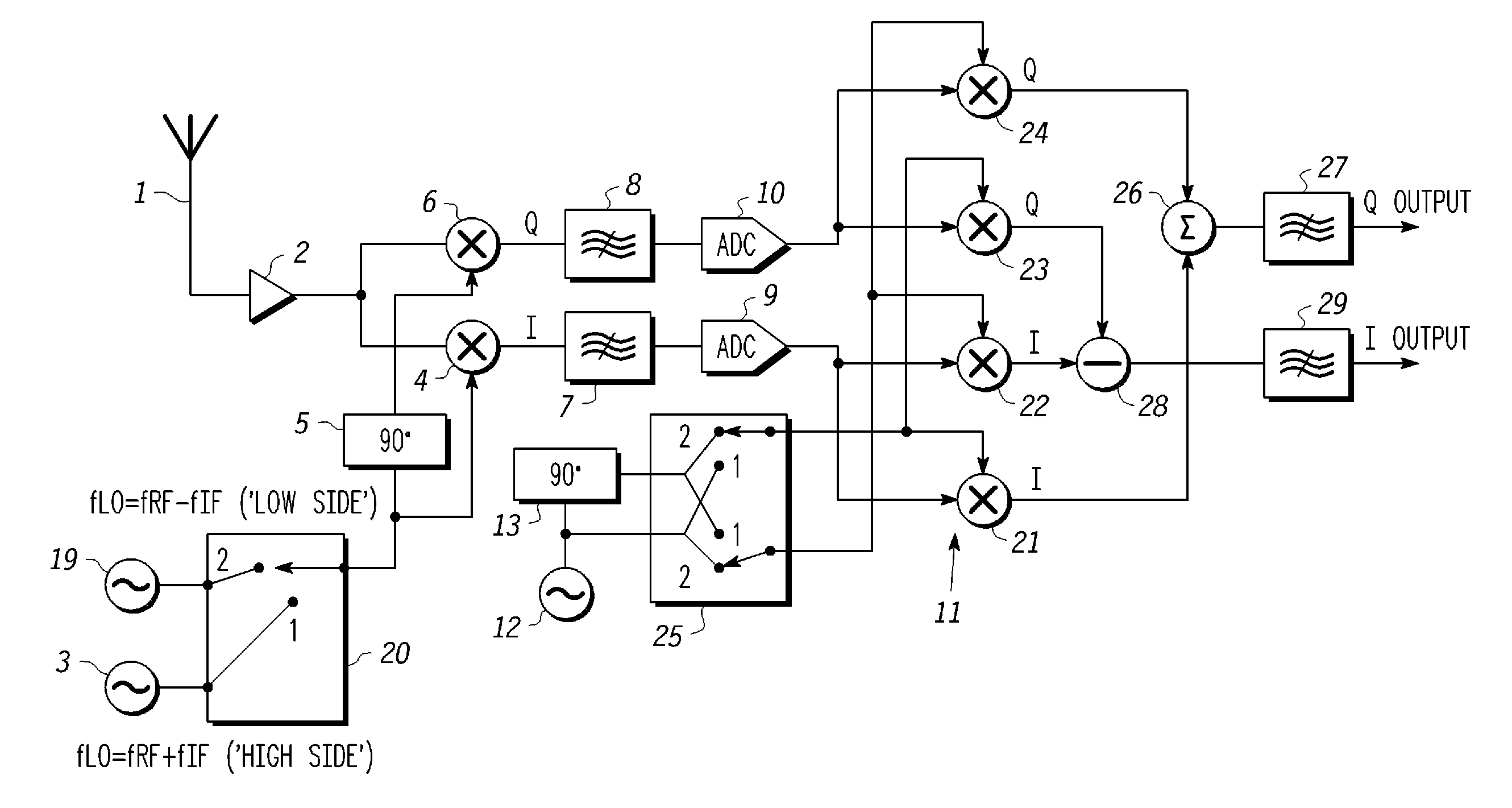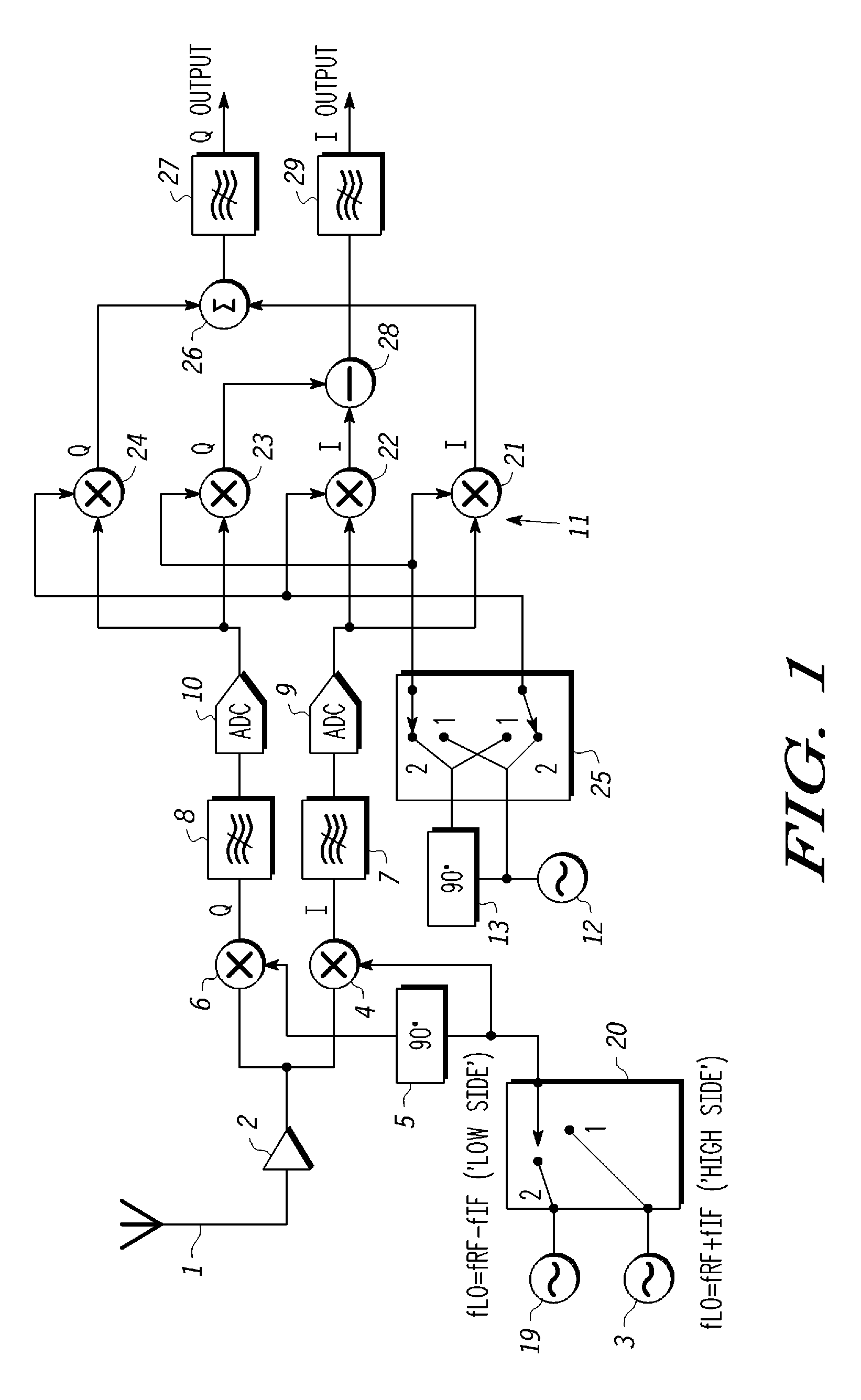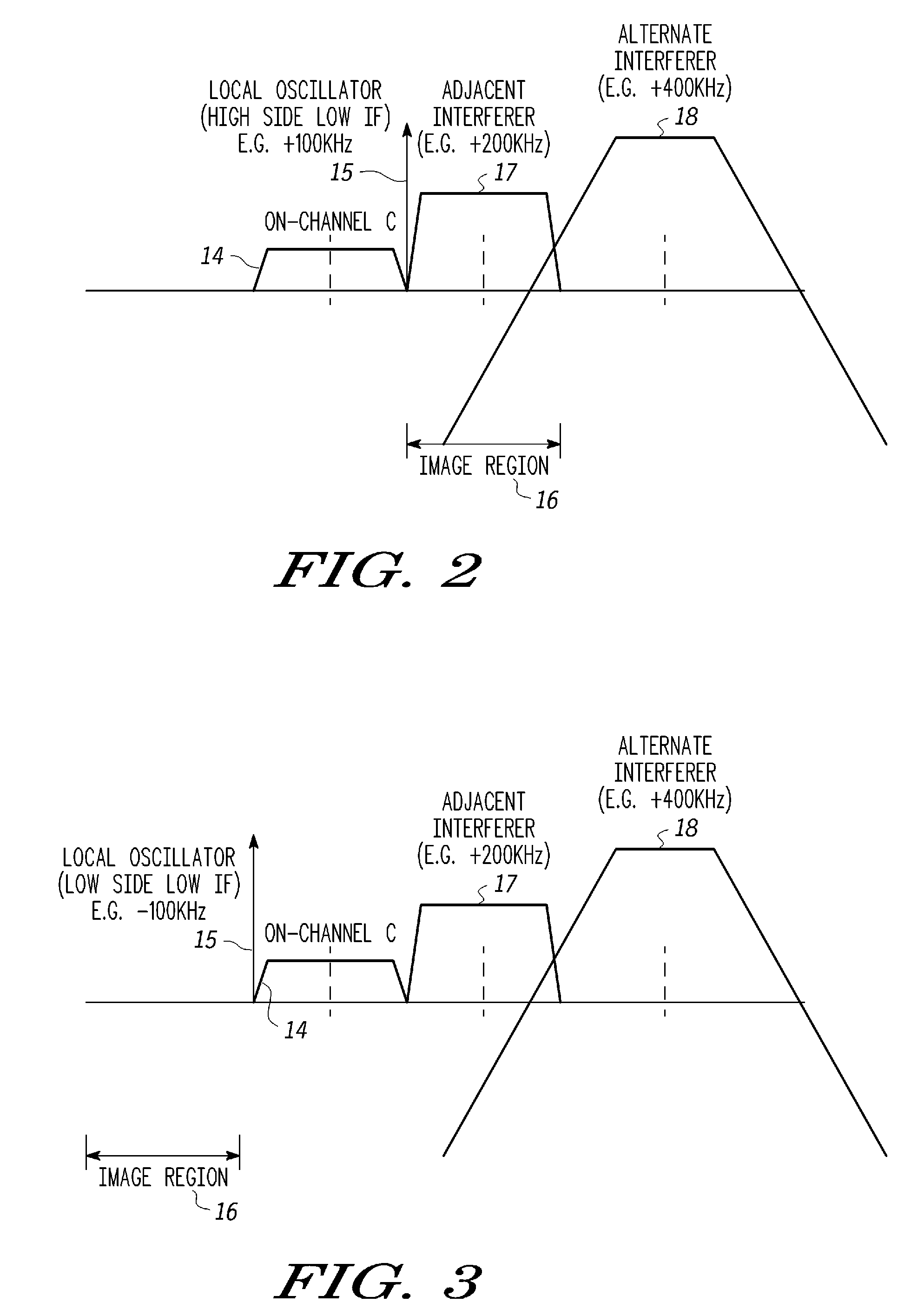Low IF radio receiver
a radio receiver and low intermediate frequency technology, applied in the field of low intermediate frequency (‘ if’) radio receivers, can solve the problems of easy rejection of standard filter topologies, software overhead, manufacturing overhead and extra hardware, and adds cost in terms of yield
- Summary
- Abstract
- Description
- Claims
- Application Information
AI Technical Summary
Benefits of technology
Problems solved by technology
Method used
Image
Examples
Embodiment Construction
[0012]The receiver shown in FIG. 1 comprises an antenna 1 for supplying received radio signals to an amplifier 2. A ‘High Side’ local oscillator 3 produces a local oscillator signal at a frequency fLO higher than the wanted channel frequency fwanted, so that fLO=fwanted+fIF. The signal from the High Side local oscillator 3 is supplied to an I-channel mixer 4 and to a phase shifter 5 that shifts the phase of the signal from the High Side local oscillator 3 by 90° and supplies the phase-shifted signal to a Q-channel mixer 6. The I- and Q-channel mixers 4 and 6 mix the received signal from the amplifier 2 with the local oscillator signals to produce low IF signals (in the present case VLIF signals) in phase quadrature and supply the low IF signals to I- and Q-low-pass-filters 7 and 8. The filtered analogue signals from the filters 7 and 8 are then converted to digital signals by analogue-to-digital converters (‘ADCs’) 9 and 10 respectively and down-converted from VLIF to DC in a digita...
PUM
 Login to View More
Login to View More Abstract
Description
Claims
Application Information
 Login to View More
Login to View More - R&D
- Intellectual Property
- Life Sciences
- Materials
- Tech Scout
- Unparalleled Data Quality
- Higher Quality Content
- 60% Fewer Hallucinations
Browse by: Latest US Patents, China's latest patents, Technical Efficacy Thesaurus, Application Domain, Technology Topic, Popular Technical Reports.
© 2025 PatSnap. All rights reserved.Legal|Privacy policy|Modern Slavery Act Transparency Statement|Sitemap|About US| Contact US: help@patsnap.com



